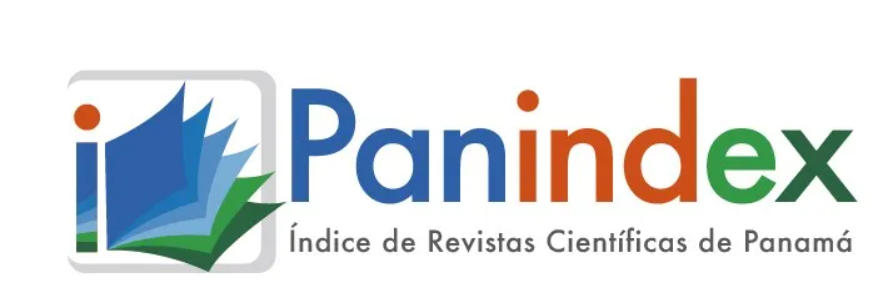The content of the publications and the links suggested in them are the sole responsibility of the authors and not of the METROPOLITAN UNIVERSITY OF EDUCATION, SCIENCE AND TECHNOLOGY (UMECIT) or DIALOGUS magazine. They are protected by international copyright laws as well as the UMECIT and DIALOGUS logos, hence their reproduction is totally prohibited.
This work is licensed under a Creative Commons Attribution-NonCommercial-NoDerivatives 4.0 International License.
The authors maintain the copyright and transfer the right of the first publication to the journal, with the article registered with Creative Commons Attribution-NonCommercial-NoDerivatives License, which allow others They can download the works published in this magazine and share them with other people, as long as their authorship is recognized, but they cannot be changed in any way nor can they be used commercially.
Authors are recommended to include their work in social networks such as Researchgate and institutional repositories once the article or visible fact has been published on the journal page, without forgetting to include the digital document identifier and the name of the journal.



Abstract
The paper presents the reflection on the teaching practice of teacher Paola Martínez, who directs the courses of physics and mathematics in the Institución Educativa Fusca sede El Cerro in the municipality of Chía, Cundinamarca and who noticed the benefits of think the classroom as a natural laboratory to observe the characteristics of the teaching and learning of physics as a science and the importance of this process to the classroom. This reflective exercise is part of the vision of the teacher as a researcher who has resources to respond to new situations, always from his daily reflecting on his action without having to interrupt it, which brings the huge advantage of reorganize what you are doing while you are doing it, confirming that in this way the professional knowledge of the teacher emerges in and from the practice.
Keywords
References
Bolívar, A. (2005). Conocimiento didáctico del contenido y didácticas específicas. Profesorado: Revista de Curriculum Y Formación Del Profesorado, 2(9), 1–39. Retrieved from http://www.ugr.es/~recfpro/rev92ART6.pdf
Bowler, P., Bowler, P. J., & Rhys, I. (2007). Panorama general de la ciencia moderna. (CRÍTICA, Ed.).
Bruner, J. (1997). BRUNER, J. La educación, puerta de la cultura. 2000. Aprendizaje Visor. Madrid. Capítulo 2. p. 63 – 83.pdf.
Bunge, M. (1959). La ciencia: su método, su filosofía. (LAETOLI, Ed.).
Calvo, G. (2002). EL DOCENTE: RESPONSABLE DE LA INVESTIGACIÓN PEDAGÓGICA, 9–11.
Díaz, F., & Hernandez, G. (2002). Estrategias docentes para un aprendizaje significativo: Una interpretación constructivista. (McGraw-Hill, Ed.). México, D.F.
Eric, C., & Kendall, B. (1999). Valoración continua *, 21–30.
Fautapo. (2009). Manual de estrategias didácticas. (Fundación Educación para el Desarrollo, Ed.). Bolivia.
Garritz, A. (1999). El conocimiento pedagógico del contenido.
Golombek, D. a. (2008). Aprender y enseñar ciencias: del laboratorio al aula y viceversa. Revista Iberoamericana de Educación, 1–88.
González, M. P. F. J. M. G. R. A. W. E. R. M. (2016). Aportes para la enseñanza de las ciencias naturales.
Harlen, W. (2013). Evaluación y educación en ciencias basada en la indagación: Aspectos de la política y la práctica. Retrieved from http://www.fondation-lamap.org/sites/default/files/upload/media/IBSE assessment guide _ spanish.pdf
Jane, L. (2013). Pensamiento Visible. Para El Aula, 7.
Kaplún, M. (1998). UNA PEDAGOGÍA DE LA COMUNICACIÓN. (E. de la Torre, Ed.).
Osorio, D., Hernández, Y., Soto, R., & Orozco, Y. (2014). El Conocimiento Del Contexto Como Un Conocimiento Profesional Del Profesor De Biología. Aportes De Cuatro Docentes Y Sus Experiencias. In VII Encuentro Nacional de Experiencias en la Enseñanza de la Biología y la Educación Ambiental y II Congreso Nacional de Investigación en la Enseñanza de la Biología (pp. 867–876).
Perkins, D. (2001). ¿CÓMO HACER VISIBLE EL PENSAMIENTO?, 1–4.
Polya, G. (1989). Cómo plantear y resolver problemas. (E. Trillas, Ed.) (15th ed.). México.
Ritchhart, R., Church, M., & Morrison, K. (2014). Hacer visible el pensamiento. (Paidós, Ed.) (1st ed.).
Schoenfeld, A. (1985). Mathematical Problem Solving. (Academic Press Inc, Ed.). New York.
SED. (2007). Cuadernos de Currículo Colegios Públicos de excelencia para Bogotá Orientaciones curriculares.
Shulman, L. (2005). Conocimiento y enseñanza: fundamentos de la nueva reforma. Profesorado. Revista de Currículum Y Formación Del Profesorado, 9(2), 1–30. https://doi.org/http://www.ugr.es/local/recfpro/Rev92ART1.pdf
Talanquer, V. (2014). Razonamiento Pedagógico Específico sobre el Contenido ( RPEC ). Educación Química, 25(3), 391–397. https://doi.org/10.1016/S0187-893X(14)70554-3
Tinajero, L. (2010). COMPETENCIA EN COMUNICACIÓN LINGÜÍSTICA: Competencia Lingüística vs. Competencia Comunicativa Resumen: Revista Digital Para Porfesionales de La Enseñanza., (6), 1–5.
Tishman, S., & Palmer, P. (2005). Pensamiento Visible. Pensamiento, 4–6.
Valbuena, E. O. (2007). EL CONOCIMIENTO DIDÁCTICO DEL CONTENIDO BIOLÓGICO: ESTUDIO DE LAS CONCEPCIONES DISCIPLINARES Y DIDÁCTICAS DE FUTUROS DOCENTES DE LA UNIVERSIDAD PEDAGÓGICA NACIONAL (COLOMBIA). UNIVERSIDAD COMPLUTENSE DE MADRID.
Vizcarro, C., & Juárez, E. (2008). La metodología del Aprendizaje Basado en Problemas. El Aprendizaje Basado En Problemas En La Enseñanza Universitaria, 9–32.
Woolfolk, A. (2010). Psicología Educativa. (Pearson, Ed.). https://doi.org/10.1016/j.pse.2015.08.005
Downloads
Publication Facts
Reviewer profiles N/A
Author statements
- Academic society
- Universidad Metropolitana de Educación, Ciencia y Tecnología
- Publisher
- Universidad Metropolitana de Educación, Ciencia y Tecnología




















